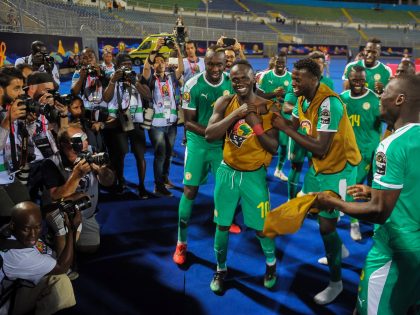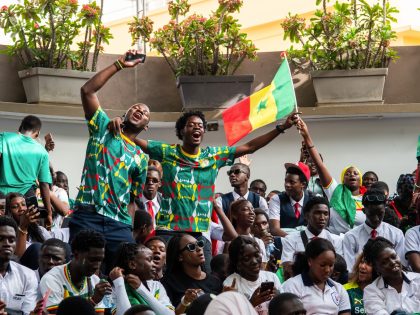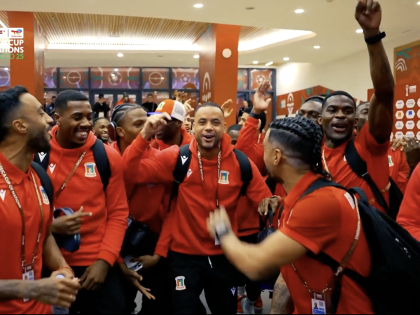The Dookoom Debate
What role should media play in the midst of controversial cultural expressions, like songs that address racist violence by white farmers against their workers in South Africa?

Trevor Samson via World Bank Flickr CC.
Sometimes one can’t help but feel disheartened by the way we speak to each other in South Africa. Or rather, how people talk past each other, or about each other. Despite the fact that the peaceful transition to democracy in South Africa, often hailed as a “miracle,” was due to the ability of former enemies to meet around the negotiation table, our public debate twenty years after democracy frequently resembles a battlefield.
The most recent spark in the powder keg of our tenuous social contract is a song from the crew Dookoom, titled ‘Larney jou poes’. The song was recently introduced to the wider public by newspaper City Press, one of the South Africa’s largest Sunday newspapers. Similar to this, was the same newspaper’s publication of the artist Brett Murray’s infamous painting of President Jacob Zuma in 2012,”the Spear.” It immediately poses the question of the media’s role in the midst of controversial cultural expressions.
In the song (which begins with an introduction sung to the tune of the children’s gospel song Father Abraham), Cape Flats hip-hop artist Isaac Mutant verbalises the frustration of coloured and black farm workers fed-up with their treatment at the hands of white farmers. It contains imagery of workers whose souls and bodies have been exhausted through manual labour, of the ‘dop’ system (payment by alcohol) and of a white farmer shouting at his workers. This is followed by a call on workers to burn down the farms, accompanied by images of burning tyres, a farm worker holding a gun and plenty of middle fingers on display. The video culminates in the band’s name ‘Dookoom’ being literally burnt onto a hill.
This is clearly protest music, aimed at eliciting reaction. And many rose to the bait. Social media was abuzz with the story, and several columns followed. The organisation Afriforum claimed that the song was hate speech that incites violence, and laid a complaint with the Human Rights Commission.
How should one react to a musical hand grenade like the one Dookoom has just thrown into our cultural landscape?
The first option is to avail yourself of the legal discourse, the way Afriforum did. Indeed, the Constitution is an important bedrock of our democracy. But when calling on the Constitution becomes a way of avoiding difficult conversations, the long-term effect will be to impoverish rather than deepen our democracy. The Constitution is like a referee in a boxing match – it has an important function in setting the boundaries of the fight. But even if he ensures that the opponents don’t bite each other or hit below the belt, it remains a violent clash. To blow the whistle won’t make opponents understand each other better or help them find ways to resolve the dispute. But, do we really want a public debate that has as its final objective to see your opponent on the floor?
Court cases and official complaints can broker a brief armistice, but won’t bring about greater understanding and tolerance. Afriforum probably doesn’t have a problem with being identified with a particular ethnic minority’s interests, but the organisation would probably boost their credibility among the broader community if for a change they would also drag Afrikaners guilty of racism to the Constitutional Court.
Dookoom pointed out this discrepancy in their response to Afriforum’s complaint: “There’s a difference between expressing anger and inciting violence. Let’s focus on why people are angry. Social injustice. Surely treating workers worse than animals is an incitement to violence?”
It is possible that the Human Rights Commission could find that the song qualifies as hate speech and press the mute button. But will that bring us any closer to a conversation about the reasons for farm workers’ anger and frustration?
There is also a second way to react to the challenging video, namely to view it as a cultural phenomenon in the public sphere. Cultural expressions require more nuanced reactions than the stark black-and-white of law books, because they are embedded in the complicated web of history, power and social inequality. It’s different to crude political slogans that are simply aimed at inciting violence for political gain.
Dookom’s song doesn’t emerge out of thin air. It is embedded in more than three centuries of injustice, exploitation and oppression in the name of “civilisation” – from which the explicit reference in the song to 1652 when the settlers with a convict crew arrived at the Cape, the foundation of the National Party in 1657 and the depiction of the dop system.
As was the case with the Bok van Blerk song De La Rey that played loudly at braais across the country a couple of years ago, Dookom also invokes history to address current injustices. Van Blerk’s song was not nearly as explicit or angry but only naïve listeners wouldn’t understand the implications of words such as “‘n handjie van ons teen ‘n hele groot mag” (a handful of us against a big force) and “‘n nasie wat weer op sal staan” (a nation that will rise again).
Furthermore Dookoom’s song can’t be viewed in isolation of continued social inequality, the glacial pace of land reform and everyday white racism. For instance think about the recent blackface incidents at the Universities of Stellenbosch and Pretoria. The majority of the white community treated these incidents as simply innocent student fun , while many of the voices from the black community reminded us of the painful history of these practices. Dookoom’s song might not be politically innocent, but it is a sharp reminder of the ‘flipside of the Fairest Cape’ as the alternative Afrikaans troubadour Koos Kombuis sang years ago.
A counter-argument could be that outraged and emotional statements do more harm than good. The German philosopher Jürgen Habermas’s influential but idealistic concept of the public sphere as a place for rational and reasoned discussion, has influenced media norms such as “objectivity” and balance. But Habermas based his theory on a bourgeois European fantasy, not messy, unequal, violent new democracies like South Africa. In her work on democratic debate, politics scholar Susan Bickford argues that emotional expressions in the public domain aren’t inappropriate, because they give an indication of which issues people feel the strongest about.
South Africa’s long history of social polarization, distrust, resentment and hate still echoes throughout our social interactions, including those in the media. Just look at the orgy of racist hate and personal abuse that appears in the comments sections of such news websites as News24 and it is clear that a rational public sphere in South Africa is an elusive ideal. The challenge is rather to try and listen to those emotions and to try to determine their origins – it requires the willingness to keep listening across differences and insults, especially when it gets difficult.
Does this mean that Dookoom’s frustrated, outraged cry carries the same weight as the sulking of white racists? No, that’s where the issue of access to media platforms and the power to control representations comes into play. In an ideal world a farm worker in the rural Western Cape would have the same opportunities to air her grievances as an auditor from the posh southern suburbs of Cape Town. But in the ‘real existing public sphere’ as the critic Nancy Fraser calls it, it isn’t the case.
Don’t believe the hype social media isn’t exactly the open, democratic environment it is often celebrated for. Dookoom’s video carries an age restriction on YouTube, but type in “boerestaat” or “boerevolk” in YouTube’s search engine, or go to the Afrikaans singer and right-wing political activist Sunette Bridges’ Facebook page and you can help yourself to an abundance of racist propaganda, without limitations. Dookoom’s song is an uncomfortable, painful reminder that many South Africans still feel that they will only be heard if they shout. It asks of those that have up to now been doing the talking, to listen to that which they don’t have to agree with. For a change.
* This article first appeared as an oped in Afrikaans in Die Burger newspaper.



















